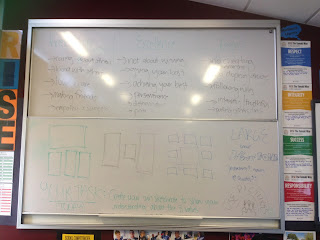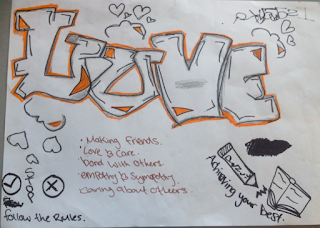 Today was the 5th annual hui for the Manaiakalani cluster, which was intriguing, innovating and inspirational for myself, my colleagues and my students.
Today was the 5th annual hui for the Manaiakalani cluster, which was intriguing, innovating and inspirational for myself, my colleagues and my students.
Throughout the day we had a variety of speakers including children from the cluster, Spark MIT teachers, researchers from Woolf Fisher and Manaiakalani ambassadors.
 |
| Nicola Wells - MDTA alumni & Spark |
Although each of the speakers had different thoughts, datum and provocations to highlight, there were common questions and take-aways for me from the day.
 Russel Burt's statistics resonated with me - there are 47,000+ jobs in the tech sector. As teachers, we know we are preparing students for their future pathways, however we often do not know what we are preparing them for. To hear there are over 47,000 jobs in one sector, primarily in our community, is astounding. I began to ponder where our students will head, and realised the potential students have to be successful in the tech sector with a Manaiakalani background. Thus, I need to enhance students knowledge and skills to be ahead in the ever-changing technological world.
Russel Burt's statistics resonated with me - there are 47,000+ jobs in the tech sector. As teachers, we know we are preparing students for their future pathways, however we often do not know what we are preparing them for. To hear there are over 47,000 jobs in one sector, primarily in our community, is astounding. I began to ponder where our students will head, and realised the potential students have to be successful in the tech sector with a Manaiakalani background. Thus, I need to enhance students knowledge and skills to be ahead in the ever-changing technological world.
Rebecca, Aaron and Stuart from the Woolf Fisher Research Centre emphasised the need for an increase in literacy by inclusion of deep, critical texts to read and write about. Not only in English, but subject-wide. My challenge is to get involved with this proposal, and question how we can include texts in our HPE curriculum, particular at the Junior level that is primarily practical. Matt Goodwin encouraged me to think about the share component of Learn, Create, Share in a different light - moving away from Copy Paste from a Doc to share in an exciting light. I hope to include blogs in my teaching next year, to increase reading and writing literacy in exciting, innovative ways through the share component of the Manaiakalani pedagogy.
From here, I need to start thinking about student blogging and how this can be used efficiently in my classes and subject, not only for the Share component, but also to accelerate student learning.
Check out #manaiakalani for the Twitter feed from the hui!
.png?height=199&width=200)




















